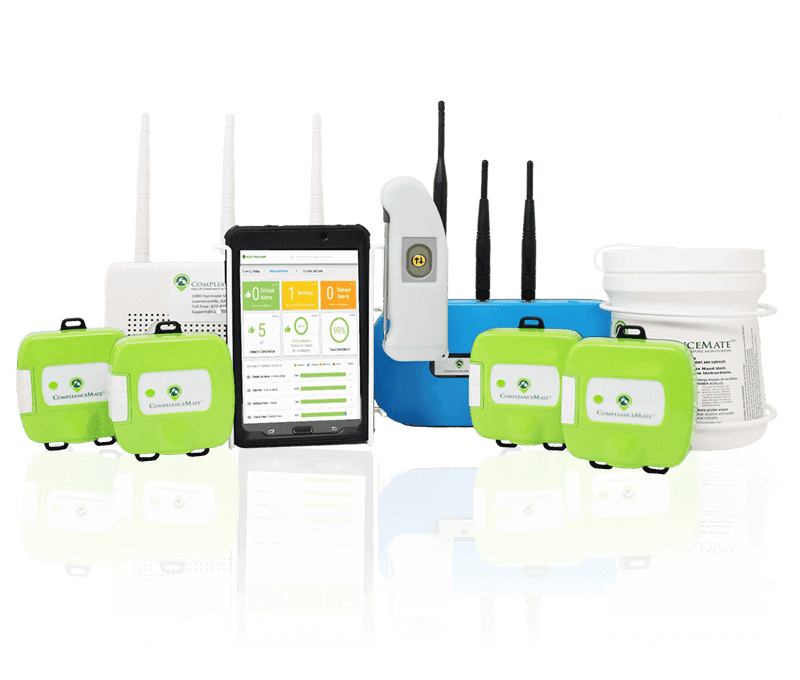Labor management has long been one of the foodservice establishment industry’s biggest headaches. Even prior to the COVID-19 crisis, attracting and retaining the kinds of quality employees needed to sustain a successful foodservice establishment was a difficult task. But COVID-19 accelerated this trend. A National Foodservice establishment Association report released in April 2020, just months after the outbreak of the pandemic, found that two-thirds of foodservice establishment employees had lost their jobs as a direct result of the crisis.
It’s true that many of these frontline workers came back to their old positions as the lockdowns and other COVID-related restrictions eased. However, it’s also clear that a large number of experienced foodservice workers decided to leave the foodservice establishment industry for good in the wake of these pandemic-inspired disruptions. In October 2021, the foodservice establishment sector recorded an unemployment rate of 7.5% (according to a Department of Labor report), significantly above the pre-pandemic level.
Now more than ever, foodservice establishments struggle to attract and retain skilled staff. The food industry workforce is more transient than ever, and foodservice establishments can find themselves either short-staffed or hiring less-than-ideal candidates. That, in turn, can create a barrier to developing an effective food safety culture.
Thankfully, investing in technology can help greatly with these issues. Today’s foodservice establishments have access to wireless temperature sensors, food safety management software, digitized auditing tools, and other innovative technological solutions that can boost employee productivity.
Technology can correct and compensate for worker misconceptions or undertraining.

A study from the Centers for Disease Control and Prevention’s Environmental Health Specialists Network found that 35% of foods cooled more slowly than published guidelines. In other words, workers might believe food is safe because the guidelines say so, but the reality might be very different. Given that improper cooling techniques have led to hundreds of foodborne illness outbreaks in the U.S., the burden is on workers to properly monitor temperatures regardless of what they may think is safe.
However, labor shortages and high turnover rates mean that many foodservice establishments often have trouble training staff properly, which only increases the likelihood of food contamination. Workers are less likely to benefit from the knowledge that can be gained from experienced onsite employees. That’s why it’s important for foodservice establishments to adopt technology that can institute an automated process to ensure brand standards are met and proactively eliminate the harm that might be caused by inexperienced, undertrained workers.
Technology like automated monitoring sensors and wireless probes enable workers to stay on top of food temperatures. These devices are designed for continuous monitoring, so workers don’t have to keep checking temperatures manually enabling to manage other aspects of the BOH. Temperature sensors for food safety can be configured to send an alert if certain thresholds are about to be or have been breached. An employee can proactively manage the process knowing that in the event of equipment failure the sensor devices will send an alert when needed, according to predetermined temperature ranges and rules.
Technology can help with workers who get distracted.
Busy workers have a harder time properly following food safety practices; for example, they’re less likely to wash their hands when they should. They might also easily miss or misread temperature or humidity checks in food storage units. And given the chronic labor shortage in the food industry, this is a problem that is now more common than ever.
A temperature monitoring system with wireless IOT-based sensors can automatically notify staff members whenever temperatures go out of spec, while digital checklists can recommend specific corrective actions so that nothing is left to chance, and then log whatever action the user takes. This gives employees the kind of guidance they need to ensure adherence to food safety standards and minimize risks to customer health.
Technology can ensure workers follow procedure, even when they are reluctant or unsure how.
Food safety technologies make it harder to fake data or fill out logs improperly. Instead of relying on a lengthy manual process that is susceptible to human error, wireless probes and sensors can work in seconds and automatically log food temperatures—no pencil or paper needed. In fact, “pencil whipping,” or the practice of filling in incorrect information, virtually disappears when you have food safety software recording the temperatures. This helps to reduce human error and improve the efficiency of foodservice establishment staff.
Technology can reduce labor costs.

While we are certainly nowhere near the point where foodservice establishments can be fully automated, existing technology can go a long way toward reducing the amount of time and effort that must be spent on monitoring kitchen equipment, storage units, and other utilities. Overburdened employees then have more time for tasks that require personalized attention.
For example, if you have WiFi temperature sensors continuously monitoring a freezer, there’s no need for an employee to check it every hour or so. Because these kinds of monitoring solutions send an alert in the event of an emergency, foodservice establishment staff don’t have to worry about routine checks at all, so this task can be left off employee schedules.
Food safety technology means employees have fewer “busywork” tasks they must complete. This can reduce employee stress and workload, which is key to promoting low turnover.
Technology can equip workers to deliver the service consumers expect today.
Our focus here has been on food safety measures, but technology can help your staff in every aspect of foodservice establishment management. Consider handheld tablets for your workforce to help them follow foodservice establishment cleaning procedures and ensure customer satisfaction.
In their Foodservice establishment Trends Report in 2022, Toast, which sells point-of-sale technology solutions, noted that while labor shortages continue to be a challenge in the foodservice establishment industry, new technology has improved employee productivity by 4.5%, allowing for more transactions per employee and faster table turnaround times. That doesn’t just make customers happy enough to come back, it also improves staff retention. Always make sure your frontline employees have the tools they need to be successful.
ComplianceMate⢠food safety system provides HACCP-compliant checklists and automated storage-unit monitoring technology to thousands of foodservice establishment locations in the U.S. and around the world. Including award-winning wireless temperature sensors, mobile technologies, and easy-to-manage tools, ComplianceMate⢠gives users an unprecedented level of control over their food safety practices.
Would you like more information? Contact ComplianceMate with your questions.


